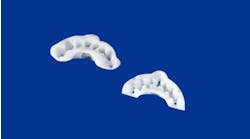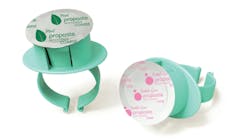BY NOEL BRANDON KELSCH, RDHAP
A friend of mine was recently locked out of her computer, and she asked me for assistance. She'd forgotten her password. I simply went to my search engine and entered in our question, and the answer came back with a phone number we could call.
Some of the things we do in dentistry require us to investigate and to go to the right source. One of these is the use of Food and Drug Administration-approved medical devices. Sterilizers and sterilization pouches have to be FDA approved. Each sterilizer must have the manufacturer's contact information as well as:
Descriptive information
- Purpose of the device (indications for use)
- Description of the device
- When the device should not be used (contraindications)
- Risks and benefits
- Expectations of the device and the procedure associated with the device
- General warnings and precautions
- Importance of the need to adhere to a care regimen
Operating information
- Set-up instructions
- Check-out procedures
- Operating instructions
- Importance of the need to monitor the activity of the device
- Cleaning instructions
- Description of maintenance and who should do it
- Storage instructions
- Expected failure time and mode and their effect on patients
- Instructions on how to safely dispose of the device
- Instructions on accessories
- Instructions on related and additional devices
Troubleshooting information
These directions are specific to the product and are the science behind the product. You are required to follow them to ensure the safety of the patient and staff. Let's take one simple instruction that is often questioned. I called several sterilizer manufacturers and asked, "Paper up, plastic down?" "Plastic up, paper down?"
-----------------------------------------------
Other articles by Kelsch
- There's poo on you: Dry hands correctly after a visit to the restroom
- Cleaning House: Housekeeping duties in the dental environment are critical
- Human bites in the dental setting: Prepare in advance for a biting incident
-----------------------------------------------
If you do not have a manual in your office for your specific unit, search for the manual online, or go to the back of your unit and you'll find contact information for the manufacturer. The problem is that many people allow the human factor to creep in. They do not go to the manual or the manufacturer for directions. They want the simple answer and ask other people for an answer. Each unit has directions that are specific to that unit's use.
My friend called the number I had given her and allowed someone to take control of her computer to fix the issue. The problem is that the "someone" was a computer hacker, and I'm very lucky my friend is still talking to me. It is vital for us to read the directions that come with our FDA-grade medical devices, and that all staff members are trained to follow those instructions.
Some tips from the manufacturers:
- Make sure your pouch matches the machine you're using. Some pouch material does not work with specific sterilization methods.
- Do not overload the machine! Read your manual and find out what the maximum load and weight is.
- All pouches must be approved by the FDA. You cannot make your own pouches.
- Pouches should be loosely packed and may overlap, but handpieces and instruments must be single height loaded (not piled or stacked), to permit proper steam flow and penetration to the items.
- Do not allow anything to touch the sides of the sterilizer. This can impact the packaging and melt items. If you are seeing melting of plastic items or browning of your pouches, you're probably overloading the machine.
- Use the rack and/or tray that comes with the unit. This is part of the medical device and helps ensure that it's functioning properly.
- Do not end the cycle early. On most cycles, drying is part of the cycle.
- If you're getting backed up in using the sterilizer, it's probably time to buy a second unit.
- Read the directions for your machine and make sure everyone in the office who uses the machine is following the directions.
- Make sure to dry items before you put them in pouches. Dry in, dry out. Wet in, wet out.
- Clean and maintain the unit as directed in the instructions. For example, most steam sterilizers require weekly flushing of the line.
Special thanks to Cathy Klein from Midmark and Doug Brendle from SciCan for their input and tips for this article. For more information on FDA-grade medical devices, go to fda.gov/MedicalDevices. RDH
The final answer to the headline
The Centers for Disease Control and Prevention states:
"All items to be sterilized should be arranged so all surfaces will be directly exposed to the sterilizing agent. Thus, loading procedures must allow for free circulation of steam (or another sterilant) around each item. There are several important basic principles for loading a sterilizer: allow for proper sterilant circulation; perforated trays should be placed so the tray is parallel to the shelf; nonperforated containers should be placed on their edge (e.g., basins); small items should be loosely placed in wire baskets; and peel packs should be placed on edge in perforated or mesh bottom racks or baskets."
If you are unable to load the pouches on their side, follow the manufacturer's directions for paper side up or plastic side down.
NOEL BRANDON KELSCH, RDHAP, is a syndicated columnist, writer, speaker, and cartoonist. She serves on the editorial review committee for the Organization for Safety, Asepsis and Prevention newsletter and has received many national awards. Kelsch owns her dental hygiene practice that focuses on access to care for all and helps facilitate the Simi Valley Free Dental Clinic. She has devoted much of her 35 years in dentistry to educating people about the devastating effects of methamphetamines and drug use. She is a past president of the California Dental Hygienists' Association.





